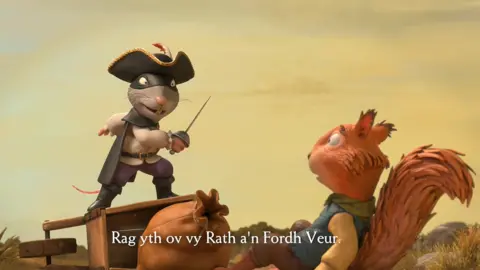- Social Media
Photos: Search for survivors after Russian drones and missiles hit Kyiv
时间:2010-12-5 17:23:32 作者:Movies 来源:Commodities 查看: 评论:0内容摘要:Petronela Merauje sits in a boat as Paula Hamadi, right, stands chest deep in water as she collects clams in a mangrove forest where only women are permitted to enter in Jayapura, Papua province, Indonesia on Wednesday, Oct. 2, 2024. (AP Photo/Firdia Lisnawati)Petronela Merauje sits in a boat as Paula Hamadi, right, stands chest deep in water as she collects clams in a mangrove forest where only women are permitted to enter in Jayapura, Papua province, Indonesia on Wednesday, Oct. 2, 2024. (AP Photo/Firdia Lisnawati)
The Apolima-Arara, who participated in the Ashaninka’s festivities along with Yawanawa, Huni Kuin, and other tribes, are dealing with some of the same problems faced by their neighbors decades ago. Part of their territory has been deforested by non-Indigenous people, and they are working to improve their agricultural production. The main village, Nordestino, has largely eliminated surrounding pasture by planting trees.So far, the OPIRJ project has provided agricultural equipment and a boat for territorial surveillance.
“Apiwtxa is an example to us. No Indigenous people retook their territory easily,” Apolima-Arara leader José Angelo Macedo Avelino said from inside the village’s collective hut, accompanied by other tribe members. “Apiwtxa suffered just like us, and now their territory is recovered. We plan to do the same.”The Associated Press’ climate and environmental coverage receives financial support from multiple private foundations. AP is solely responsible for all content. Find AP’sfor working with philanthropies, a list of supporters and funded coverage areas at

SAVE VALLEY CONSERVANCY, Zimbabwe (AP) — On the impoverished edges of a conservancy that protects wildlife in southeastern Zimbabwe, 14-year-old Esther Bote wakes up at dawn to a practiced daily routine.She cleans the house, lights the fire, cooks, bathes and gets into her neat grey and white school uniform. Then it’s time for what she considers the most perilous chore: the 5-kilometer (3-mile) walk to school through bush paths and forests where dangerous animals might lurk.

The teenager has been living with such threats for some time now but there is no getting used to it. Children as young as 5, some held by the hand by slightly older peers or siblings, briskly walk in thick forests to school and then back home.
“Sometimes we see animal footprints. We see their footprints and can tell that the elephants are still around,” she told The Associated Press from her home, where she stays with her elderly grandparents.Carolyn Baker, a runner who suffered from heatstroke last year, prepares for the Falmouth Walk, Saturday, Aug. 17, 2024, in Falmouth, Mass. (AP Photo/Jeff Roberson)
Runner Carolyn Baker, who suffered from heatstroke last year, poses for a portrait a day before competing in the Falmouth Road Race, Saturday, Aug. 17, 2024, in Falmouth, Mass. (AP Photo/Jeff Roberson)Runner Carolyn Baker, who suffered from heatstroke last year, poses for a portrait a day before competing in the Falmouth Road Race, Saturday, Aug. 17, 2024, in Falmouth, Mass. (AP Photo/Jeff Roberson)
The heatstroke that felled Baker last year is a deadly, and climate change is worsening the risk. In the continental U.S., the frequency of dangerously hot days
- 最近更新
- 2025-07-07 05:56:10Liverpool forward Diogo Jota rose to the heights of soccer stardom before his tragic …
- 2025-07-07 05:56:10Gaza youth shun turmeric video trend due to food crisis
- 2025-07-07 05:56:10ABC NewsLawsuit accuses Trump admin of targeting minorities in Los Angeles immigration raids
- 2025-07-07 05:56:10John Fogerty on the stories behind 5 of his turning-est, burning-est hits
- 2025-07-07 05:56:10Secure and steady returns: 7 best low-risk investments for retirees
- 2025-07-07 05:56:1031 spectacular Fourth of July desserts
- 2025-07-07 05:56:10Secure and steady returns: 7 best low-risk investments for retirees
- 2025-07-07 05:56:10alternatives to cable television
- 热门排行
- 2025-07-07 05:56:10How to pay off your credit card debt
- 2025-07-07 05:56:10History Illustrated: Israel’s history of preemptive strikes
- 2025-07-07 05:56:102026 COLA Prediction Update - May
- 2025-07-07 05:56:10What is Iran’s IRGC and who has Israel killed?
- 2025-07-07 05:56:10this two-pack of under-sink organizers
- 2025-07-07 05:56:10At least 66 children in Gaza have starved to death during Israel’s genocide
- 2025-07-07 05:56:10Interest rates on 60-month new car loans in the United States from January 2014 to May 2025
- 2025-07-07 05:56:10Sean ‘Diddy’ Combs convicted on two of five counts in sex abuse trial
- 友情链接
- Can divided European powers help end Israel’s war on Iran? North Korea sending teams to Russia’s Kursk to aid war-hit area’s recovery Thailand says ‘progress made’ in border dispute talks with Cambodia What led to the attempted assassination of a Colombian politician? Dashcam captures huge blast in Ashdod in Israel Petro’s labour reform referendum suspended by Colombia’s Council of State Israel hits Tehran with massive air attacks Hurricane Erick approaches Pacific coast, threatens Mexico with flooding North Korea sending teams to Russia’s Kursk to aid war-hit area’s recovery Eight killed after hot air balloon crashes in Brazil US imposes new Mexican cartel sanctions, cites murder of TikTok influencer Indonesia’s Mount Lewotobi Laki-laki volcano erupts, alert at highest level In Brazil, a fight over offshore drilling tests Lula’s climate ambitions Mbappe absent again as Real Madrid face Pachuca at CWC – all to know Eight killed after hot air balloon crashes in Brazil Dashcam captures huge blast in Ashdod in Israel North Korea sending teams to Russia’s Kursk to aid war-hit area’s recovery See inside newly found smuggling tunnel under Mexico-US border Petro’s labour reform referendum suspended by Colombia’s Council of State Russia-Ukraine war: List of key events, day 1,213 First Test: India and England evenly poised after day three at Headingley Fruit and veg threat extends Thailand-Cambodia border row Dashcam captures huge blast in Ashdod in Israel Israel-Iran conflict: List of key events, June 22, 2025 See inside newly found smuggling tunnel under Mexico-US border Panama declares emergency in western province after deadly pension protests US imposes new Mexican cartel sanctions, cites murder of TikTok influencer At least one person killed, several injured, after earthquake hits Peru Suicide bombing attack on church in Syria Pope century leads England fightback against India at Headingley

